Inside the Elegant Science of Brewing the Perfect French Press
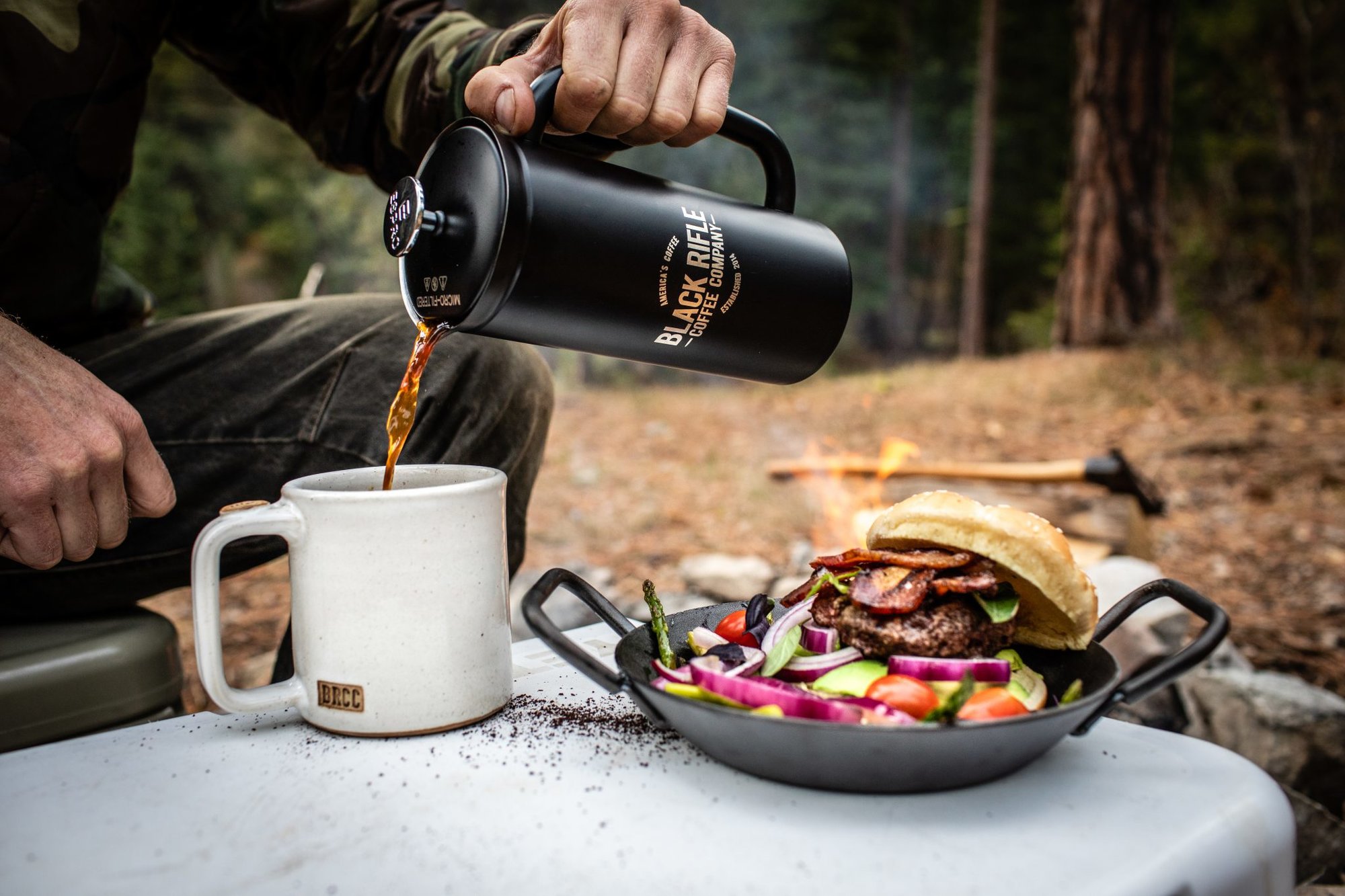
The French press is a versatile brew that can be used at home or in the backcountry. Photo courtesy of Black Rifle Coffee Company.
The French press. Every coffee aficionado has one, but whether it’s kept handy or left to collect dust in a graveyard of abandoned coffee baubles is the real question. To this day, the French press is still considered one of the most finicky methods of brewing coffee. It seems as if a few extra seconds, a gram of grounds, or just a drop more water can put all desires of a rich, dark cup to a quick death, leaving users with a weak, oily mess.
The truth is, coffee brewing — much like cooking and other kitchen crafts — is a careful science. In order to achieve your perfect cup with a French press, understanding its history, science, and design mechanics is imperative.
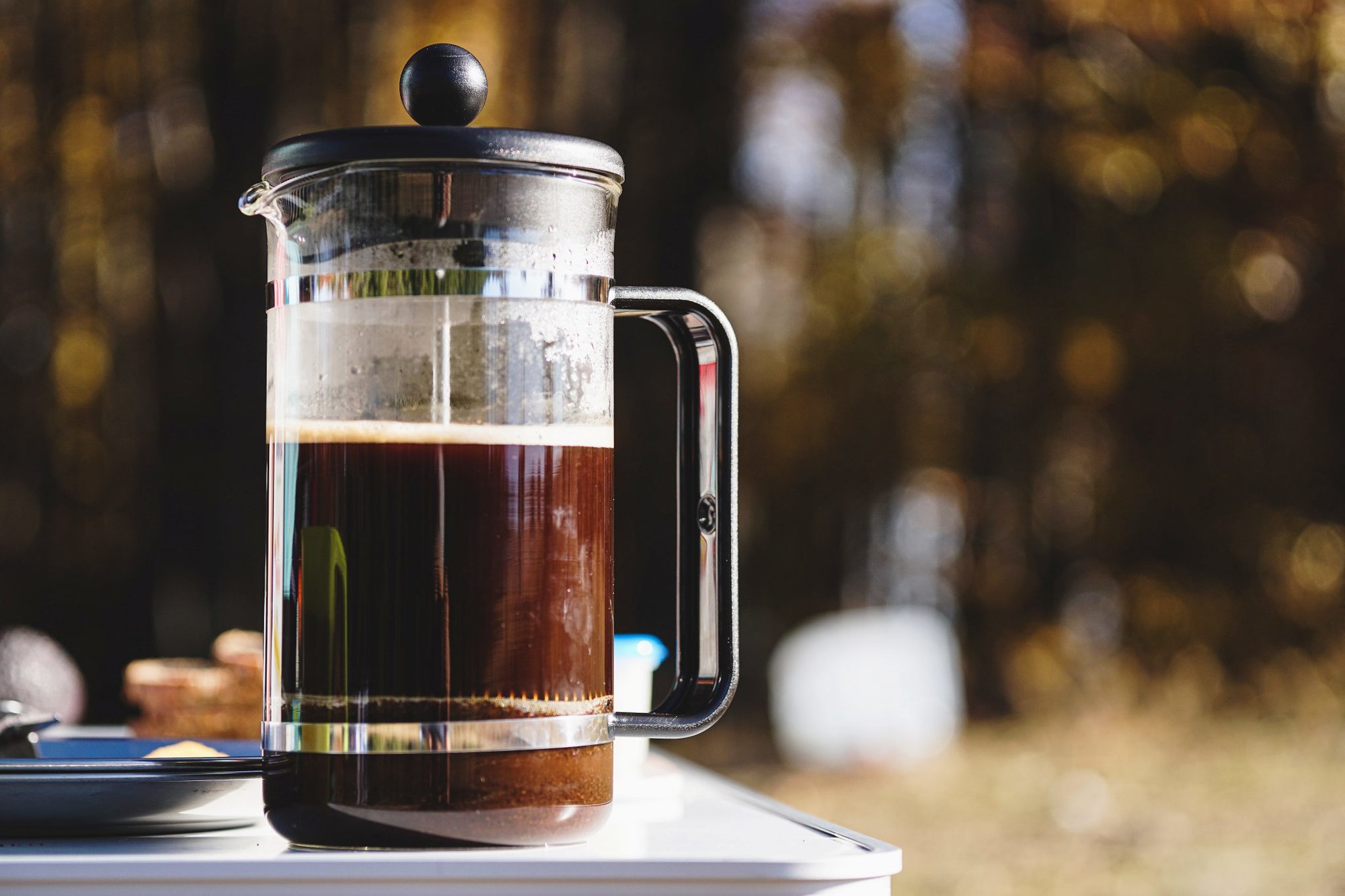
The French press, also known as a coffee press or cafetiere, was formally patented in 1929, with many experimental prototypes dating back all the way to 1852. It is an evolution of the immersion brewing technique, which involves steeping coffee grounds in water and then filtering the finished product through a tight mesh, like a cheesecloth.
The French press takes a different approach: Coffee grounds are placed in a cylindrical beaker, usually made of glass or metal, and hot water is poured over them. After they have steeped for the desired amount of time, the coffee grounds are pressed down to the bottom of the cylinder using a plunger and piston equipped with a fine metal mesh. This drives the brewed coffee up and away from the grounds, giving the beverage the depth and full-bodied richness of an immersion brew, similar to Turkish coffee, without the grainy, sludgy thickness that usually sits at the bottom of it.
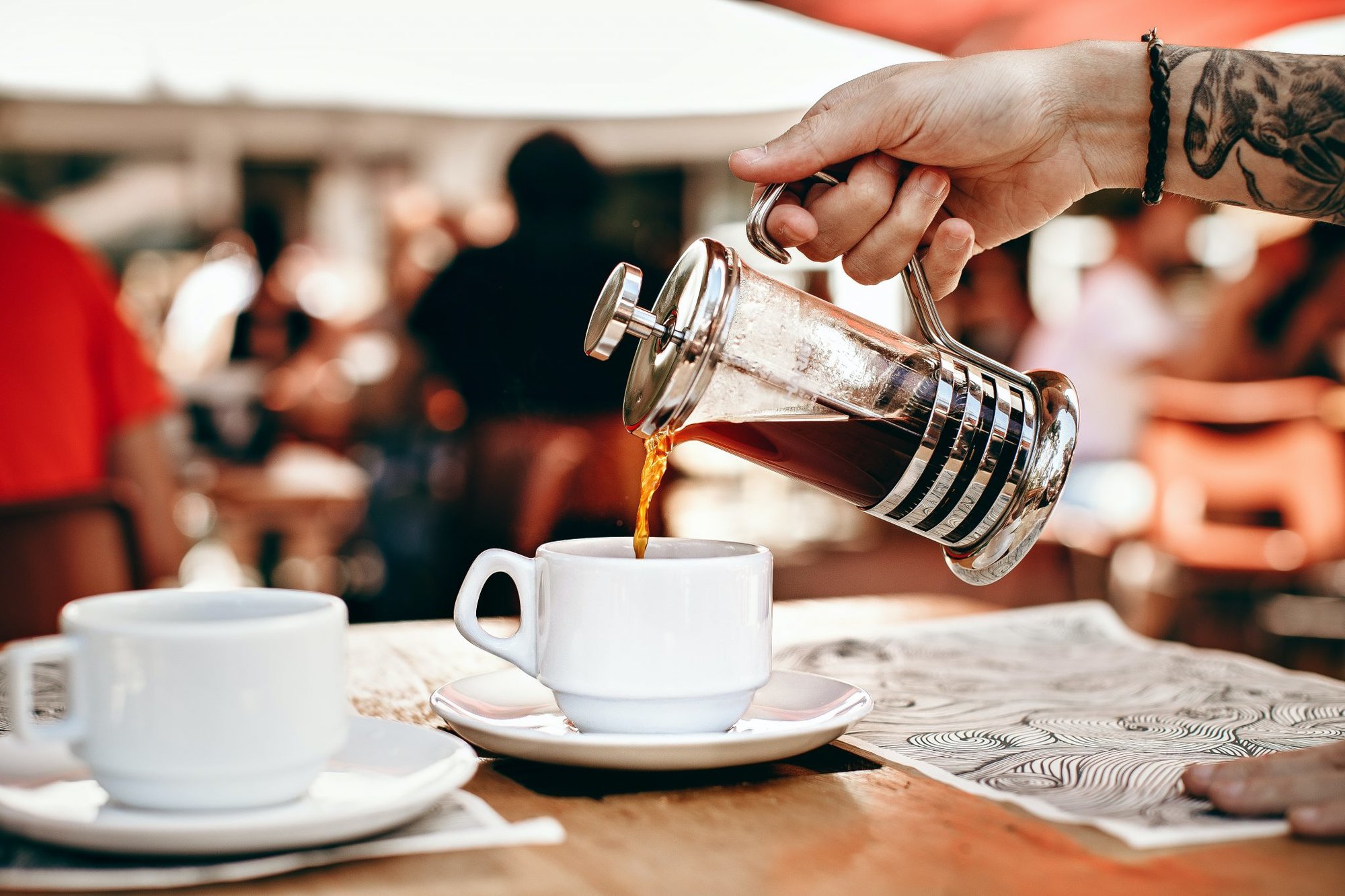
To understand how to make the best French press coffee, it’s important to understand the science of osmosis, or the movement of water through a membrane. The strength of osmosis is affected by osmotic pressure, meaning the concentrated liquid on one side of the membrane tries to transfer its contents to the less concentrated liquid on the other side. With coffee, this means that a properly submerged coffee ground will be full of highly concentrated liquid (coffee particles that have dissolved into the hot water) and that liquid will try to force its way out of the grounds into the clear water surrounding the ground. The fewer impurities the water outside the grounds has, the higher the osmotic pressure will be, resulting in a better cup.
This is why purified water is preferred. Since the water passes over the grounds relatively quickly, more osmotic pressure means more coffee flavor. However, this comes with the risk of over-extraction of the grounds and drawing out the bitter, oily contents of the bean. There are a few ways to mitigate this.
First and foremost, make sure your coffee grounds are coarse. This will both ensure that the osmotic pressure doesn’t completely purge the oils from the bean as well as make sure there are no loose grounds that bypass the mesh and make it into your cup.
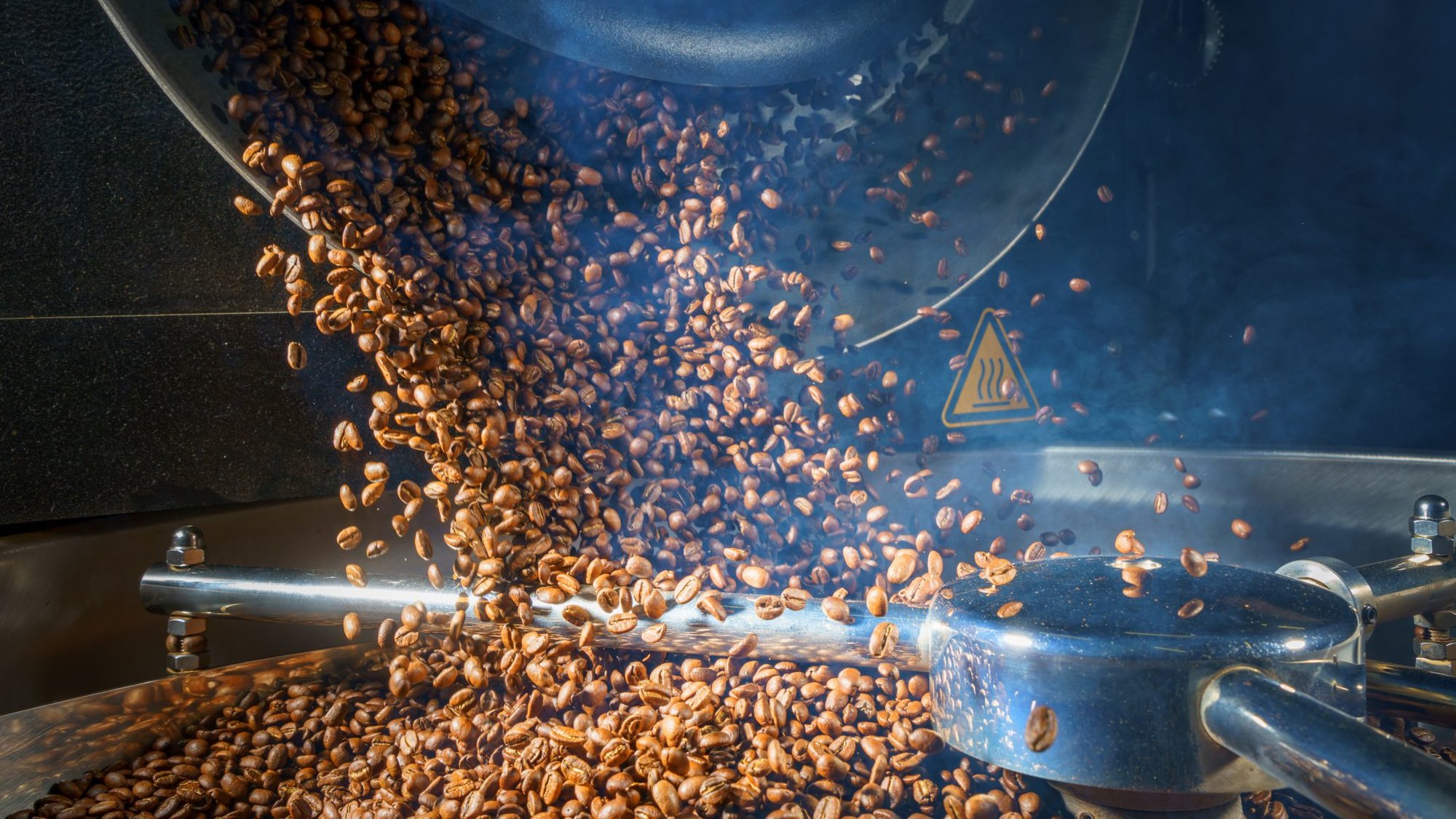
Timing is another key factor in making the perfect French press, but what counts as “perfect” depends on the person brewing the coffee. Conventional wisdom tells us to brew for three to four minutes, but there is a new trend of brewing for longer, more like six to eight minutes. Those who prefer the shorter windows will argue that longer brewing risks over-extraction, leaving the coffee bitter and oily, while the long-timers claim the extra brew time brings out subtle, unique flavors.
With longer steep times, it’s possible the osmotic pressure decreases over time as the concentration inside the grounds lowers, and the stronger coffee can create a more complex brew. Ultimately, you’ll want to experiment to see which method you prefer and how long is too long for your taste, but consider three minutes your minimum.
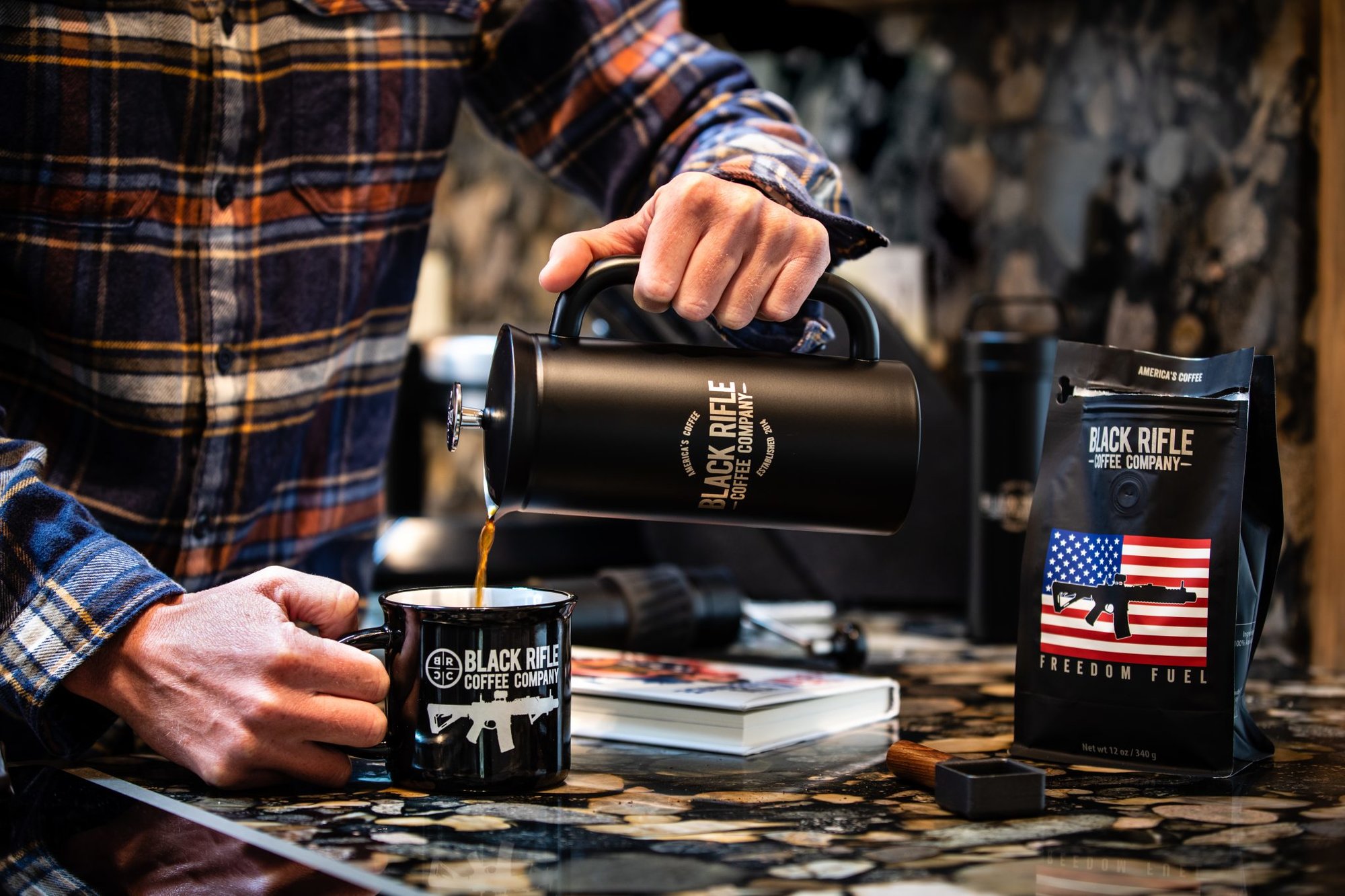
To start, you’ll want coarsely ground coffee that resembles coarse sea salt or steel-cut oats. If you have a home grinder, start by using the largest setting, or tell your coffee vendor you would like a French press grind. Again, bigger is better because it will greatly reduce the amount of sediment that shows up in the finished cup, and it will help the brewed coffee pass cleanly through the plunger mesh.
When you boil your water, make sure to heat enough water for two cylinders’ worth. Once the water has come to a boil, immediately fill the French press before adding the grounds. This will heat up the cylinder so that, when you brew your coffee, the temperature doesn’t drop right away.
After about 30 seconds of letting the water sit in your French press, pour out the first batch of water. At this point, you’re ready to add your grounds, and the remaining water in your kettle should be at just about the right temperature. Pour in just enough water to cover the grounds and then stop. This step is often referred to as blooming the coffee, and it’s required, as it allows trapped carbon dioxide to escape before the beans can properly steep. This release of gas causes a foamy top layer that drags some of the grounds to the surface, so you’ll want to let all the gas escape for about 30 to 45 seconds before gently stirring the grounds, allowing them to settle back into the water.
Finish filling your cylinder and put the plunger on, pressing it down ever so slightly to make sure no grounds are floating above the water level. You’ll want to use between 60 and 70 grams of coffee per liter of water. That’s about a 1:15 mass ratio if you want to take the time to weigh things out. After letting your brew steep for your chosen period of time, you’ll be ready to filter it.
Press down on the plunger gently but firmly until it reaches the bottom of the cylinder. Don’t fight it if it sticks; just pull it back up an inch and gently try again. It’s important not to agitate the grounds at the last second or to try squeezing out some extra liquid from them, since this risks making the coffee bitter. In addition, if you disrupt the grounds too much or misalign the plunger, you might get unwanted sediment in your coffee. Unlike drip or filter coffee, the French press doesn’t have a paper filter, so it allows more natural oils and microscopic grinds, known as fines, to be released into your cup. These elements give the French press its signature body and richness, so don’t be alarmed if your coffee feels a little more viscous than usual; that’s all part of the experience.
Read Next:

BRCC and Bad Moon Print Press team up for an exclusive, limited-edition T-shirt design!
BRCC partners with Team Room Design for an exclusive T-shirt release!
Thirty Seconds Out has partnered with BRCC for an exclusive shirt design invoking the God of Winter.
Lucas O'Hara of Grizzly Forge has teamed up with BRCC for a badass, exclusive Shirt Club T-shirt design featuring his most popular knife and tiomahawk.
Coffee or Die sits down with one of the graphic designers behind Black Rifle Coffee's signature look and vibe.
Biden will award the Medal of Honor to a Vietnam War Army helicopter pilot who risked his life to save a reconnaissance team from almost certain death.
Ever wonder how much Jack Mandaville would f*ck sh*t up if he went back in time? The American Revolution didn't even see him coming.
A nearly 200-year-old West Point time capsule that at first appeared to yield little more than dust contains hidden treasure, the US Military Academy said.












